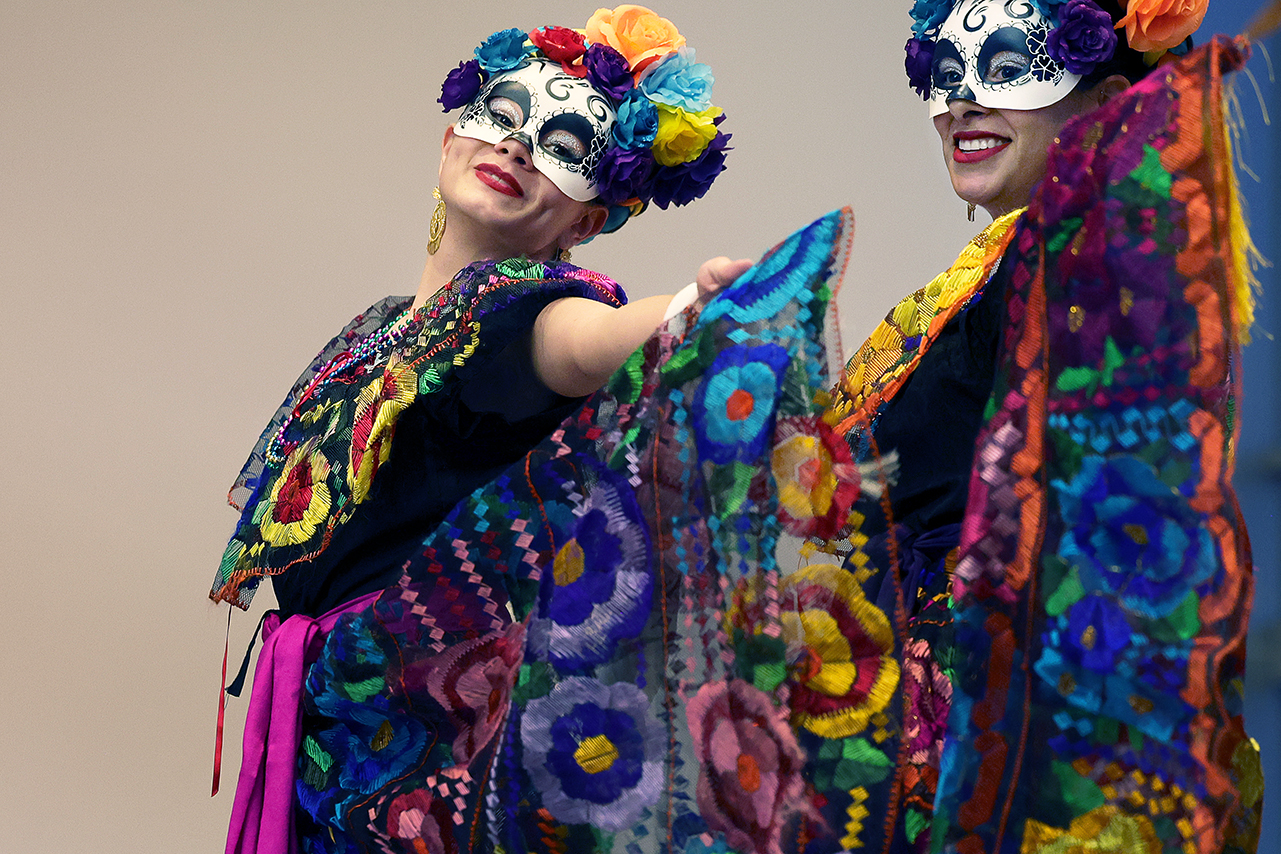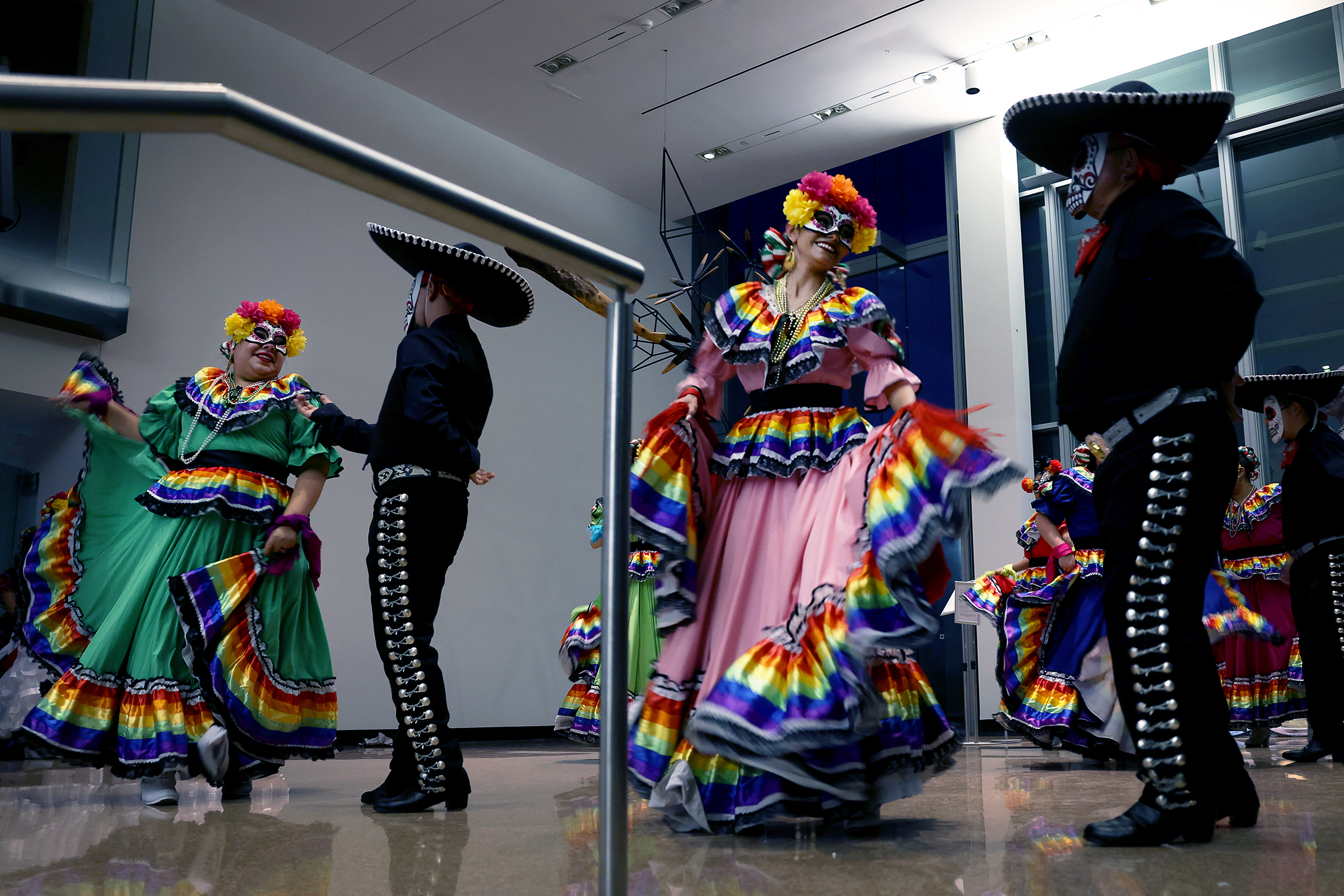In a time of political uncertainty, one tradition has continued to unite and inspire, drawing crowds and enthusiasm year after year. The Día de Muertos celebration at the Colorado Springs Fine Arts Center at Colorado College’s enduring popularity is proof that community spirit never wavers. The two-day, free event drew more than 3,100 people in its sixth consecutive year. FAC leaders couldn’t be more thrilled.
“I am very pleased with this year’s celebration!” shares Director of FAC Events Rebecca Rounds. “We added some great new community organization partners, new food vendors, and new artisans to make our mercado more robust and they have all been fantastic additions to the event, and most importantly, wonderful partners.”
Rounds is also pleased the FAC did not see a dip in attendance, which leadership thought might be the case given the political landscape in the country right now.
“We are grateful that people felt safe to enter our spaces and celebrate the holiday despite any concerns they may have had,” she says.
Traditionally held on November 1 and 2, Día de Muertos landed naturally on a weekend this year, which made it especially enticing to families looking to continue the holiday weekend which kicked off with Halloween the night before. Many come dressed in elaborate costumes, their faces painted with detailed skull makeup, a look inspired by the original 1910 artwork, “La Calavera Catrina,” by Jose Guadelupe Posada. Rounds thinks other factors are at play as well.
“We have been very intentional with our commitment to create something meaningful and welcoming to a significant population in El Paso County, and this in turn has attracted a loyal following,” Rounds says.
The FAC’s Día de Muertos event is the largest one of its kind in the Pikes Peak Region. Because the Hispanic/Latinx demographic makes up the second largest percentage of people in El Paso County and the FAC Museum houses one of the largest collections of Southwest art and objects in the country, it provided a natural opportunity six years ago for the FAC to connect art and its mission to host a cultural celebration of significance to so many people in the community.
“We have worked very intentionally to keep the celebration true to its cultural and spiritual roots, and to create a welcoming space for all people,” says Rounds. “That is and always will be paramount for our team. We partner with some wonderful community members from the Hispanic community whom we’ve gotten to know over the years and with whom we now have great relationships built on mutual respect. We consult with these partners to help shape the programming, introduce us to local community vendors to invite, and to ensure the event’s authenticity. As a result, the community trusts us, and they show up year after year.”
The entertainment is a huge draw for people who come to watch the Ballet Folklórico dancers and listen to the mariachi musicians performing throughout the weekend. Authentic Mexican food rounds out the experience for many who stay for hours at a time. The most popular activity with kids is always the sugar skull decorating.
“I continue to love seeing the rich diversity of people this event brings in—all walks of life and multi-generational representation—in community together celebrating loved ones who have passed before us. It’s such a joyful place to be,” adds Rounds.
The community ofrenda (offering, or altar) is an important stop for patrons as well.
“We have hundreds of tributes from family members on the altar by the close of the celebration, which is incredibly moving to see. We’ve created a special space for that to happen, due in large part to Denver artist Cal Duran, who, year after year, creates a unique and magical space to honor our ancestors,” explains Rounds.
FAC staff begin preparing for Día de Muertos every March and meet monthly to plan. A significant number of volunteers contribute their time to run the two-day celebration.
“It also helps that our entire team is passionate about and deeply dedicated to making this event happen,” she says. “I think we all agree it’s one of the most fulfilling things we do every year.”
With such popularity in abundance, you might wonder if the FAC might expand the event. Rounds gives one hint about that.
“We’re pretty much at capacity in our space, and we’ve continually fine-tuned the event after each year,” she says. “But I think we would like to keep welcoming new partners each year—community organizations, artisan vendors, and performers who embody the cultural roots of Día de Muertos. We dream of expanding the celebration to other areas on campus, so stay tuned to how that might look in years to come.”




